2022 Trek Rail 9.9 XX1 AXS E-Bike
(discontinued)
| Where To Buy | |||
|---|---|---|---|
Free standard shipping on all bikes (continental U.S. only).
Flat rate shipping to Hawaii and Alaska. |
Free standard shipping on all bikes (continental U.S. only).
Flat rate shipping to Hawaii and Alaska. $10,500.00
|
||
Rail 9.9 XX1 AXS Gen 3
$10,500.00
|
|||
Rail 9.9 XX1 AXS Gen 4
$14,000.00
|
|||
Fuel EXe 9.9 XX1 AXS
$14,000.00
|
|||
Fuel EX 9.9 XX1 AXS Gen 6
$9,749.99
|
|||
Fuel EXe 9.9 XX AXS T-Type
$14,000.00
|
|||
Fuel EX 9.9 XX AXS T-Type Gen 6
$11,000.00
|
|||
Free shipping on orders over $50 (continental U.S. only).
International shipping available. Some exclusions apply. |
|||
Free shipping on orders over $50 (continental U.S. only).
International shipping available. Some exclusions apply. |
|||
E-bikes are an ever-evolving product category. Any mountain biker wary of yearly incrementalism will find the e-bike landscape downright overwhelming. Trek's new Rail 9.9 line pushes the limits of technological integration and incorporates a host of new elements. Is it too much? Did they forget about the actual bike in the process? Let's dig in and sort it out.
Highlights
- 160mm (6.2-inches) front travel // 150mm (5.9-inches) rear travel
- Trek ABP suspension design
- Carbon frame
- 29-inch wheels
- Mino Link adjustable geometry
- Bosch Performance Line CX Motor - 85Nm
- 750Wh battery
- Bosch Smart system
- Boost 148 rear hub spacing with 12mm axle
- Custom RockShox Super Deluxe with ThruShaft
- Knock Block 2.0 - 72-degree turning radius and removable
- 34.9 Seat tube
- Air Wiz Fork and Shock integration (as tested)
- Tyre Wiz wheel integration (as tested)
- Weight - Rail 9.9 XX1 AXS: 50-pounds (size medium, no pedals)
- Price: $13,799 as tested
Strengths
| Weaknesses
|

Vital first rode the Trek Rail as part of our first-ever E-Bike Test Session in 2020. There was a lot to like about the Rail, with one of our testers calling it out as our favorite e-bike in the group. The power delivery, battery life, and trail manners were all fantastic and our quibbles weren't deal-breakers. The Rail is back with revised geometry and some updates to the largest issue - the rear shock. Trek has also squeezed in more tech and more batteries into this platform. Of course, our model represents the very top offering from Trek. Riders can have access to the same geometry and suspension revisions on lower-tier 9.8 models. Spoiler alert: we hope these revisions make their way all the way down the Rail line.
Geometry
Trek updated the Rail 9 series with geometry that is a bit more reflective of the new Slash. Predictably, the reach grows, the head angle is a bit more slack and the seat angle is a bit steeper.


The new Rail is available in sizes medium through extra-large. Our size medium test bike has a 452mm reach with 448mm chainstays. A 64.2-degree head angle is plenty slack and the 76.7-degree effective seat angle felt a bit more sack on the trail. The 420mm seat tube is plenty low and would allow for an even longer dropper post.
We'll get into it more later on but we do feel the Rail, and every other e-bike could benefit from a super-duper steep seat angle given their ability to climb walls.
Setup
Setting up the Rail 9.9 can be a bit of a different experience in so much as it starts with syncing your phone to your fork, rear shock, wheels, shifter, and derailleur. Because it is an e-bike, you can also download the Bosch Ride app and sync that to your bike as well. We would note the ShockWiz units only assist with suspension setup/air pressures and do not provide any performance or trail feedback.



The component sync all happens via the SRAM AXS app, which helps streamline the process. In general, the layout and formatting is all quite clean and relatively simple. After syncing, riders will input their bike (e-bike or MTB) and weight. From there, the app will give you an ideal pressure range. We used our digital shock pump to hit the target pressures. At our first go, things all went as they should. Throughout testing, however, we did notice inconsistencies between our shock pump and the AirWiz app. At one point there was a glitch that had our body weight in pounds convert to kilograms and the suggested pressures were beyond the shock units threshold. Still being sentient beings, we just used the tuning guide on the fork of the ZEB and put the rear shock to 30%.

Throughout testing, the blinking LED lights on the fork, shock, and wheels were in a steady state of fluctuation, either red or green. Because of the additional steps needed (re-syncing the phone, inputting information into the app, and going from there) in swapping between testers, we tended to ignore the flashing lights and use the same gauges we use for all of test bikes. There will certainly be riders that will like the monitoring that the Shock and Tire Wiz units do but for us, they were a bit superfluous.

On The Trail
Our Trek Rail showed up during the onset of the wet season and saw a lot of action at the local trail center and surrounding trail networks. From steep, skidder chutes to good times on e-legal singletrack, we had plenty of time to get in the miles with our test bike.
DH/Technical Performance/Fun Factor
Though the new Rail has geometry reflective of the Slash, it does run 10mm less travel at either end of the bike. We're sure the Rail is targeted at a broader user group but we'll just come out and say we wish it had the additional travel. Not because the Rail was particularly lacking (it wasn't) but because if something is good, more of it is better. Right?

The Rail gets down to business on the downhills and we kept forgetting it had shorter legs. There was more than one occasion where we felt the bike was somehow coming up short, only to remember this chassis is geared more to "trail" than to downhill/enduro. This is to say, the Rail is so much more capable than the numbers on paper and will encourage riders to get downright greedy with the terrain it can take on.

Our favorite component on the Rail would have to be the RockShox Zeb. The stout legs and buttery actuation are no doubt to blame for our continued desire to push the Rail harder. If the Trek were our own bike, we could see throwing a 170mm air spring in the fork. Sure, that slack(ish) seat tube would suffer but it may help let this dog off the leash when the going gets rowdy.
Rear Suspension Performance
We first met the revised RockShox Super Deluxe ThruShaft on the Slash last year and did appreciate its performance over other iterations we've encountered. We may still color ourselves hesitant on a proprietary unit but at the end of the day, our test shock worked great. The three-position compression adjuster provides a very different ride feel and is simple enough. More picky riders may want to fine-tune with clicks in between Trek's presets but for our part, on an e-bike, we took what we had and let the back of the bike deal with the punishment.

If there is something we've come to expect with riding an e-bike, it is how much better the suspension feels. The Trek Rail is no different. True, on our last go-round with this bike we did find ourselves wanting for better performance. Trek has upped its game and we were very happy with the Super Deluxe's ability to track in rock gardens, loft us off moto whoops and not explode when slapping back to the earth.
Unique Features
Undoubtedly the AirWiz units on the suspension and TireWiz units on the wheels set the Rail 9.9 apart from the crowd. Between all of those, the SRAM AXS units (an AXS Reverb is specced, despite our having a Bontrager dropper), and the e-bike battery and control unit, there are a lot of electronics on this bike. Some riders embrace our new robot overlords. Others do not. While we may land in the latter camp, we do recognize that plenty of riders will really dig the componentry and integration. The key element to clarify here is that the ShockWiz units simply help with setup and do not provide any performance or telemetry style feedback.


Perceived Weight
Coming in a shade over 52-pounds, the Trek Rail is by no means light. Its general girth does take some getting used to when coming from a mountain bike but things fall into place relatively quickly. Interestingly, despite having some heft behind it but having lighter weight wheels, the Rail does not roll all that fast. In a number of coasting scenarios, the Rail would get left behind by other bikes. If riders ever run out of battery, we may advise they burry this thing under some branches and come back for it. Pedaling the Rail with no power is punishment for shoplifting in some countries. Never mind pushing it, which feels more like an exhibition from the Crossfit games. What we're trying to say here is that riders should monitor their battery wisely.

Sprinting
Putting the power to the pedals on the Rail results in a power hit unmatched by other bikes we have tested. The Bosch power plant will propel riders to 20mph with a quickness. As we've felt with other e-bikes, the cut-off when that power lets up is like a child getting socks at Christmas.
Climbing
E-bikes can climb some ridiculous stuff. Long before the powerful Bosch motor and our legs were done putting out the power, our front end was aloft. Even when climbing with the seat almost all the way down and the nose of the saddle in an "awkward" position, the Rail's front would get far too light. For our part, we would really want a steeper seat angle and the appropriate geometry adjustments that accompany it.

Our other limiting factor for climbing was the Bontrager SE5 rear tire. Frankly, one could make this complaint with many rear tires on e-bikes but something with less ramp would be nice. Mountain bike tires have ramped leading edges to help them roll faster. E-bikes have motors and a lot of extra power going to the rear wheel. To that end, riders can easily run out of traction while going uphill, again, before the rider and bike are done with things. It would be cool to see some more blocky (dare we say e-bike specific?) rear tires on these bikes.
Vital has tested a lot of e-bikes. Why only bring up the tire now? Because this is the first Bosch motor we've had since our last e-bike Test Session and there is no doubt this thing hits harder than the other motors we've tested. The torque rating may be the same but there is no denying that the Bosch motor will almost literally pull you up the hill.

Our Bosch system allows riders to select four different power settings (Eco, Tour, eMTB, and Turbo) with a corresponding color code for each mode lighting up the controller and accenting the Kiox display on the top tube. In any mode, the Bosch system delivers plenty of juice but we found for our intentions the best balance to come with the eMTB mode. Battery life is much improved over Turbo while giving the bike plenty of snort to keep the party rolling. Turbo mode takes nearly all effort out of climbing and riders can find themselves spinning 13-15mph uphill on fire road ascents. We found this to be ideal when pulling fast laps on local steeps and cut lines.

In another show of technological force, the Bosch Kiox display and controller feel more like an infotainment system from an SUV than anything. There's even a warning that pops up when turning on the bike that warns against distracted riding. Riders will have access all kinds of live information and be able to scroll about with relative ease. We did find the display somewhat large and vulnerable, losing it in one particularly heinous crash. The screen is removable and riders can keep track of their modes via the color display on the controller.

Speaking of the controller and our wet conditions, we did find our buttons to gum up a tad after some exposure to mud and moisture. Much like the Kiox screen, the Bosch controller is rather large and can find itself in harm's way in the event of a go-down. Our controller did free up again but it was concerning to have limited functionality on this important component.

Build Kit
Trek's Rail 9.9 XX1 AXS is of course the top offering. All of the parts are top shelf with carbon dripping from the walls. Yes, our test bike is $13,799 which is about $2,000 more than the equivalent Slash.

Fork Performance
In the past year, we have not had too many chances to run the RockShox ZEB but whenever we do, it reminds us what a great fork it is. We had zero complaints or issues with (manual) setup on this fork.


Tire Performance
Our bike came outfitted with a Bontrager SE6 front tire and SE5 rear. The new Bontrager SE6 tire was excellent on the front of the Rail. It was never vague and held a line quite well. We would have liked to have seen its more aggressive knobs on the rear of the Rail as well. It was not so much that the SE5 underperformed but as we mentioned, a little more traction may have helped us climb to the moon.

Wheel Performance
Bontrager's Line 30 carbon wheels have been featured on a number of our test bikes over the years. The majority of the time they hold up just dandy and this round kept that trend going. We had no issues with either the hoops or the hubs on our test bike.


Brake Performance
Big bike. Big rotors. Our SRAM Code RSC brakes were kitted with a 220mm front rotor and 200mm in the rear. A matched set of 220mm would not be out of place here and we'd like to start seeing that. For our part, even in the super steep, soft, and sandy chutes, we were able to modulate our brakes and keep the wheels spinning.

Drivetrain Performance
Robotic bike, robotic drivetrain. No complaints or issues from our SRAM XX1 AXS Eagle drivetrain. E-bikes do put down the torque on a drivetrain and despite many latent, under-load shifts, the Eagle pushed our chain up the cassette with only some painful clunks but never a failure.

Noise
E-bike motors clunk when descending. It is the nature of the business and having the motor disengage while coasting. Otherwise, our Rail was nice and quiet, again, aside from the whirring of the motor. We did get our derailleur to clank occasionally when going full-tug to flat through moto-whoops.

Long Term Durability
Our Rail 9.9 saw a lot of action. A lot. It came out the other side a tad bruised but suffered no major issues. The only area of concern for us came from the Bosch components and their general size/vulnerability. Riders can pull the Kiox display but will lose some riding stats while in motion. A smaller control unit would mean less information at the ready but the tradeoff may be better durability/reduced vulnerability.

What's The Bottom Line?
Our favorite thing about the Trek Rail is the actual bike. We may be wishing for more travel but dangit, that just means this thing rips. The Rail is comfortable, confident and a blast to ride. While we are also big fans of the Bosch motor and all that glorious grunt, it comes with the cost of a system that tries to do too much. Electric mountain bikes are a dirty, messy affair and need to be specced as such. E-bikers in more dry climates or who really enjoy the additional technical integration will love the Rail 9.9.
Curious how the Rail stacked up in our e-lypics? Yeah, get filled in HERE.
Learn more at Trekbikes.com
About The Tester
Brad Howell- Age: 42 // Years Riding: 27 // Height: 5'9" (1.75m) // Weight: 165-pounds (74.8kg)
Brad started mountain biking when a 2.25-inch tire was large, and despite having threads, bottom brackets sucked. Riding in the woods with friends eventually lead way to racing, trying to send it at the local gravel pits, and working in bike shops as a wrench to fix those bikes. Brad has been fortunate enough to have dug at six Rampages, attend some World Cups, work in the industry for a few years, and become friends with some of the sport's biggest talents. These days, he just likes riding his bike in the woods with friends.
Specifications
Rear: Bontrager SE5 Team Issue, Core Strength sidewalls, aramid bead, 120 TPI, tubeless ready, 29" x 2.5"
Drop: 150mm (MD), 170mm (LG/XL)
• Removable Integrated Battery (RIB) system
• Geometry adjustable via Mino Link flip chip in rear rocker link pivot
• Knock Block 2.0 steerer stop (removable)
• Control Freak guided internal cable routing
• Weight given for size MD with tubeless sealant
• Includes Bosch 4A (100-240V) BES3 charger
• Includes Bontrager TLR rim strips and sealant
• Includes RockShox AirWiz and Quarq TireWiz electronic pressure indicators for suspension and tires
• All-in-one navigation and activity tracking through the Bosch eBike Flow app
| Where To Buy | |||
|---|---|---|---|
Free standard shipping on all bikes (continental U.S. only).
Flat rate shipping to Hawaii and Alaska. |
Free standard shipping on all bikes (continental U.S. only).
Flat rate shipping to Hawaii and Alaska. $10,500.00
|
||
Rail 9.9 XX1 AXS Gen 3
$10,500.00
|
|||
Rail 9.9 XX1 AXS Gen 4
$14,000.00
|
|||
Fuel EXe 9.9 XX1 AXS
$14,000.00
|
|||
Fuel EX 9.9 XX1 AXS Gen 6
$9,749.99
|
|||
Fuel EXe 9.9 XX AXS T-Type
$14,000.00
|
|||
Fuel EX 9.9 XX AXS T-Type Gen 6
$11,000.00
|
|||
Free shipping on orders over $50 (continental U.S. only).
International shipping available. Some exclusions apply. |
|||
Free shipping on orders over $50 (continental U.S. only).
International shipping available. Some exclusions apply. |
|||






























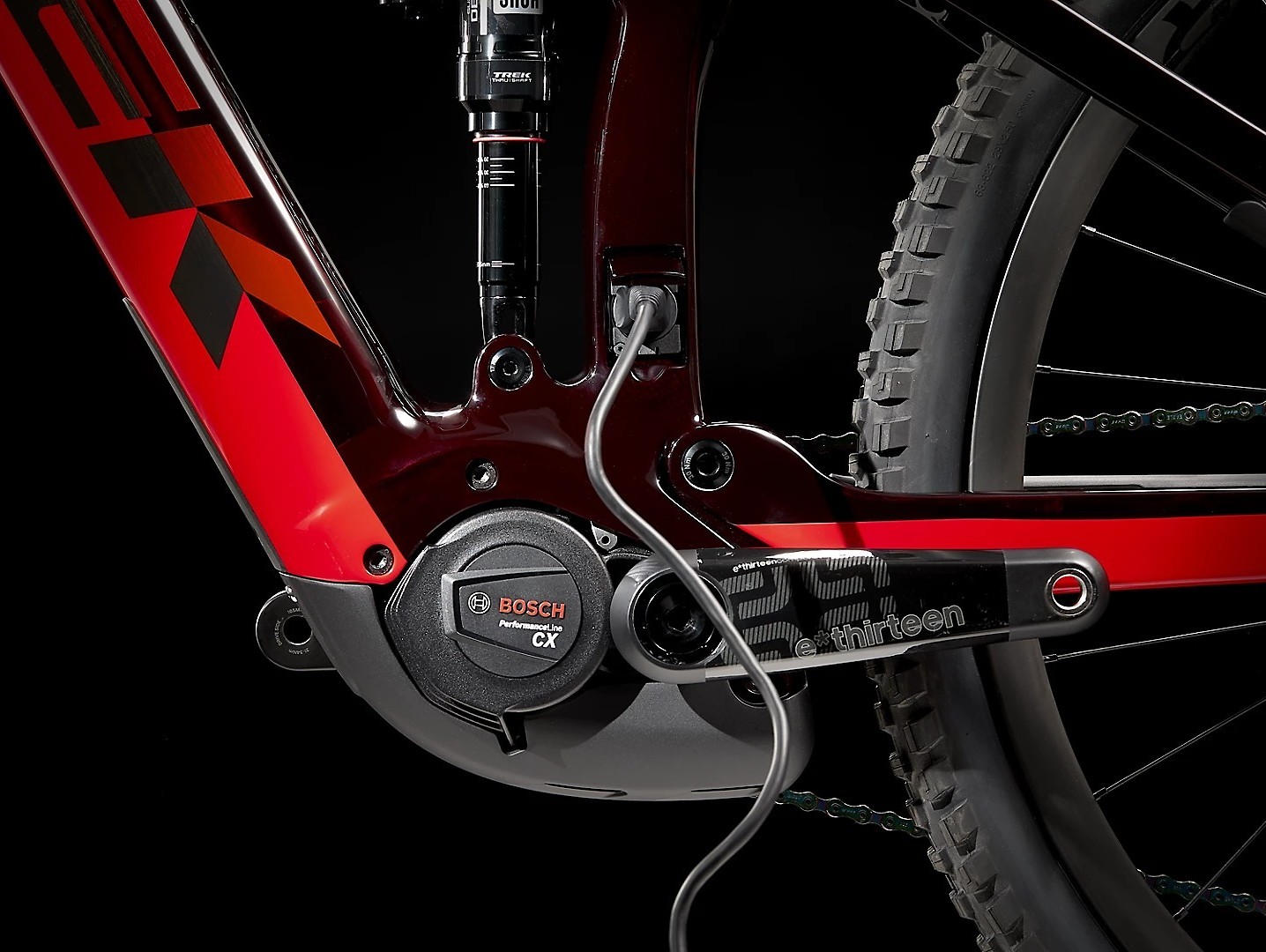










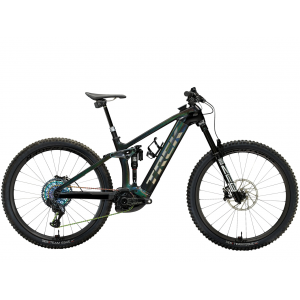

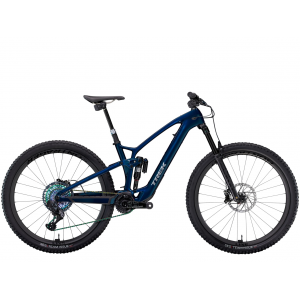
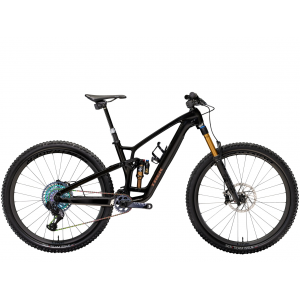
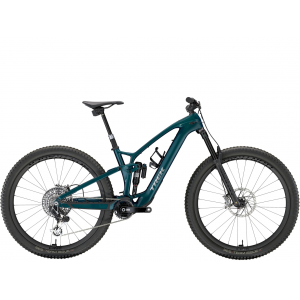
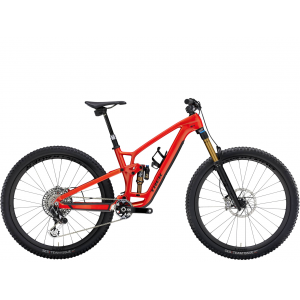


















4 comments
Post a reply to: Vital Review - 2022 Trek Rail 9.9 XX1 AXS